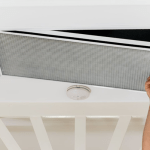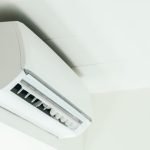With energy costs on the rise, it’s more important than ever for homeowners to look for ways to reduce the amount of energy they use. Luckily, there are several home improvements you can make that will not only help save you money but also increase your property’s value.
While some require a decent initial investment, others are relatively cheap to implement, and all will pay for themselves over time. We take a look at some of the top energy-efficient home upgrades you can make that are great for both the environment and your bank account.
Install Solar Panels
Solar panels are becoming more and more popular, and it’s not just because people are starting to care more about the environment. In fact, a recent survey by Lendi found that the main motivation Australians would have for installing solar panels on their homes would be to save money, with 60.5% of respondents looking to reduce their power bill, and only 38.2% being interested in doing so for environmental reasons.
Besides generating heat and reducing your overall bills, solar panels also generate energy that can be used to power your home and any extra can even be sold back to the grid for someone else to use. So, not only are you able to save money on your energy bills, but you may even be able to earn some money in the process.
Swap High-Energy Appliances for More Efficient Models
You would be surprised to learn just how much inefficient appliances could be adding to your energy bills each month. The biggest culprits in the home are water heaters, dehumidifiers, heating systems, air conditioning, and refrigerators. So, if any of these appliances haven’t been updated for many years, it may be time to consider purchasing a new one.
Heating systems are usually considered inefficient by today’s standard if they are more than 15 to 20 years old, while air conditioning systems that are more than ten years old may already need to be replaced. While you will need to spend some cash on a new appliance, making the switch is a great way to save money in the long run.
Insulate and Get Rid of Drafts
Poorly insulated roofs and walls could be costing you as much as $200 a year extra in energy bills. Rather than allowing heat to escape, lay down some decent loft insulation and you’ll also help keep your house cool during the warmer seasons.
As well as improving loft insulation, be sure to get a good seal on your doors and windows to avoid air leaks. You can eliminate drafts on windows by adding weather stripping or caulking and purchase stick-on insulation to run down the sides of doors that have a bit of a draft. Older windows, however, may need to be replaced altogether as sealing around the frame may not suffice.
Another trick to help keep the heat in is to hang thick curtains over windows. Not only will this help to improve comfort and reduce energy bills, but it will also help improve the aesthetics of your home.
Improve The Lighting
Did you know that lighting can account for up to a third of your total electricity consumption? There are several ways you can reduce the amount you spend on lighting, including installing new light fixtures or even switching to LED or CFL bulbs.
If you want to reduce your reliance on electricity altogether, then focus on natural lighting. You can install larger windows or skylights that allow more sunlight into your home, which not only reduces your need for artificial lighting but also adds some free natural warmth to your home during the winter.
Monitor Your Energy Use
One simple home improvement you can make is purchasing an energy monitor, which allows you to watch your energy consumption closely. Some gas and electricity companies give these out for free, so be sure to check with yours first before going off and purchasing one yourself. However, they are relatively cheap to buy if you consider how much they could help you save.
Try placing it in a commonly used area, such as the kitchen so that the whole family can see it. Being able to see how much energy you are using makes it easier to cut back as it acts as a constant reminder of how much you’re spending.







